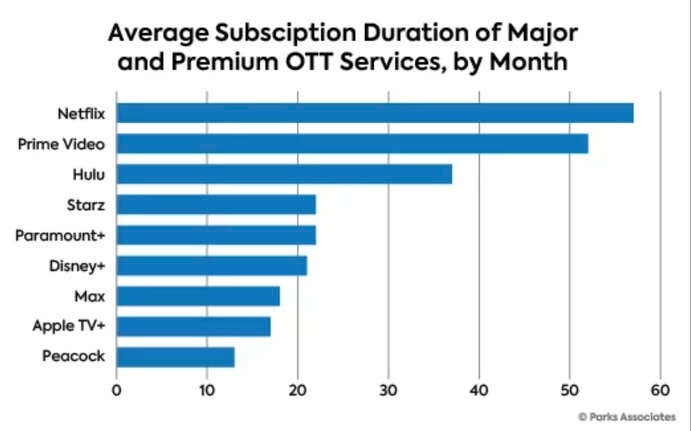- Research
- Research Memberships
- Smart Home
- Visibility Memberships
- Consumer Electronics and Entertainment
- Consulting
- Broadband and Mobility
- Primary Research
- Connected Health and Wellness
- MDU / Multifamily
- SMB
- Events
- Event
- Company
- About Parks Associates
- Consumer Electronics and Entertainment
- Consumer Electronics Devices
- Video Services: OTT, Pay TV
- Entertainment Content: Video, Audio, Gaming
-
Research
Smart Home
Smart Home Devices, Automation, Controls
Residential Security
Energy Management
Consumer Electronics and Entertainment
Consumer Electronics Devices
Video Services: OTT, Pay TV
Entertainment Content: Video, Audio, Gaming
Broadband and Mobility
Mobility
Wi-Fi and Home Networking
Support Services
Connected Health and Wellness
Wellness and Fitness
Independent Living
Telehealth
- Events
- White Papers
- Newsroom
- Company
- Consulting
- Contact Us

 New data from Parks Associates shows Netflix and Prime Video users have the greatest subscription loyalty of any streamers.
New data from Parks Associates shows Netflix and Prime Video users have the greatest subscription loyalty of any streamers.
